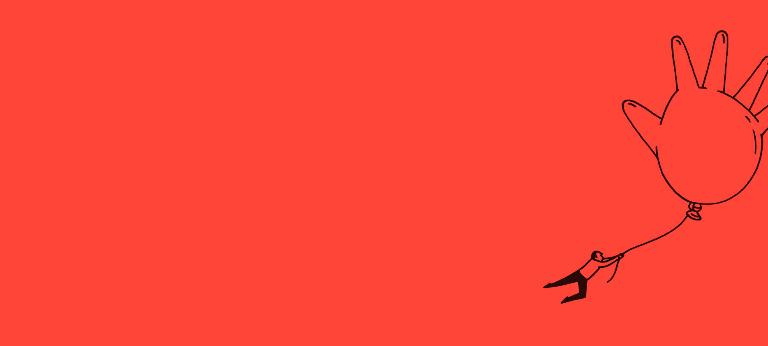Breaking the rules
![{[downloads[language].preview]}](https://www.rolandberger.com/publications/publication_image/Think_Act_Magazine_Breaking_the_rules_Cover_download_preview.jpg)
Is breaking the rules a crucial skill? We examine how the people who have made their own rules also significantly shaped the world of business.



Fifteen years ago Lego was staring into the abyss of bankruptcy, so it decided to write its own rules for success. Going back to basics helped the Danish toymaker become a major player again and it showed that achieving such a turnaround is anything but child's play: it takes leadership, a willingness to rebuild from the ground up and, most of all, vision.
When you think ofLego's products, Galidor, Jack Stone, and Steven Spielberg Moviemaker are not the first names to trip off the tongue. But they are the symbols of something darker – the Danish toymaker's brush with near bankruptcy at the start of this century. Amid the dot-com boom and the first dawn of digital play, the privately held company was bleeding money at a remarkable rate as experiments away from the plastic bricks that had brought it fame failed. "It's hard to understate how grim things seemed inside the company in 2003. How close they were to bankruptcy. There was a belief that it was going to be necessary to sell the company or liquidate it," says David Robertson, who wrote "Brick by Brick: How Lego Rewrote the Rules of Innovation" and "Conquered the Global Toy Industry". Radical proposals floated around. One came from Anders Drejer, a professor at the department of business and management at Aalborg University, who suggested Lego jettison its most distinctive product. "I actually proposed to Lego that they should stop making the brick because the physical brick wasn't essential to them. They could outsource that."

Enter Jørgen Vig Knudstorp. With the look of a grown-up Harry Potter, but without the scar, he was just 32 years old when he joined Lego in 2001. His message to Lego's then COO, the founding Christiansen family and the board in 2003 was unflinching. "I [told them] we are on a burning platform. We need to take action, because the problem is not going away," he told Robertson. Knudstorp was handed the top job at Lego in 2004. His restructuring upended the company, reversed its strategy and led to a decade of extraordinary growth as Lego's sales and profits grew by double-digit percentages each year. But as the title of the book by Robertson, a senior lecturer at MIT's Sloan School of Management, suggests, his approach was less about a new way of thinking than a return to the company's roots. Asked if Knudstorp tore up the rules, Robertson replies: "In a way it was the opposite. He was going back to the rule book." He quotes a crucial executive in Lego's turnaround – Mads Nipper, a marketing manager – who said the company needed to focus on seven-year-old German boys. "That's it. That's our goal as a company. If we can't make seven-year-old German boys happy, then we don't have a future."
Lego was founded in1932 by failed carpenter Ole Kirk Christiansen based on the Danish words "leg godt", play well. In 1958, his son Godtfred came up with the invention that changed everything – the interlocking Lego brick stud-and-tube design. The company expanded, adding lines like its Duplo bricks for toddlers and extra experiences like Legoland. It was one of the top 10 largest toymakers by 1990. By the end of that decade, it had become a global success with theme parks on several continents and other businesses such as video games as well as products that moved away from the traditional brick. Despite – or perhaps because of – many of the new products, the results took a turn for the worse. When Knudstorp took over as CEO, the situation was critical.
Drejer says Knudstorp's turnaround was based on three main things. "One is the awakening to the reality that this will not go away. The signal came from a new CEO who said things very clearly; he was very good at communicating. The second is focus. Cut away all the sick limbs of Lego to get control and focus. Then after a couple of years, everybody thought it was over. Jørgen then launched a revitalization, saying this is only the beginning, there is a long journey to success."
Knudstorp himself places his journey with Lego into five stages: survive, purpose, let growth loose, step up and leap. In the first, he put the emphasis on controlling cash, selling off peripheral businesses such as the Legoland theme park and video games. He slashed the number of parts Lego made in a bid to reduce complexity while many foreign operations were scaled back or closed down, putting the small town of Billund at the heart of the group again. The second involved work on productivity by moving much of Lego's production away from Denmark to Hungary and Mexico as well as boosting the brand. By 2009, Knudstorp felt he was able to go for growth again in the third phase. Revenues were soon increasing by more than 20% a year, leading to the fourth phase as he made sure Lego's supply chain still worked even as it expanded into Asia. His fifth and final phase during his years at Lego's helm was trying to keep the company successful despite increasing growing pains.

"One of the key things is that nothing lasts forever."
Knudstorp not only showed guts, as Robertson puts it, but a "remarkable empathy and emotional awareness" in his turnaround. He has even compared him to Steve Jobs in terms of fostering innovation. "I think he's a tremendous innovation leader. His whole style is to create a situation where other people can be the stars, where other people can have the opportunity to innovate," Robertson adds. One example is the fire engine that Nipper championed for the Lego City line early in the restructuring. It was a traditional Lego product designed to appeal to the seven-year-old German boy and it galvanized designers at the company behind the idea that the physical brick was back at the heart of its efforts. Drejer does not sound bitter that Knudstorp failed to take his advice, but he still wonders if Lego is living up to its full potential. "Jørgen did the opposite to what I suggested: He made the physical brick core to everything they do. Even when they make computer games – when Indiana Jones is killed, he's not reduced to mush, he's reduced to bricks," he says. He adds: "They are not making as much money as they could because of their connection to the brick. There are experiments that they won't do. They won't allow side businesses – video games, etc. – to take away from the main business. Mads Nipper said to me: 'The brick is so important that there has to be a balance otherwise the culture would break up.'"
Lego is currently facing its trickiest time since 2003: Sales fell in 2017 for the first time since the brush with bankruptcy. Perhaps most remarkable is that Knudstorp saw the problems coming but seemed powerless to stop them. Knudstorp told the "Financial Times" in December 2016 that he was afraid of forces that push big companies away from what made them successful in the first place. "It is bureaucracy, it is because you are getting bigger, the pressure of scaling, of finding the right talent, of having the entrepreneurial spirit despite being a very big company," he added. Drejer says it is striking that Knudstorp concentrated on the right things but was unable to prevent a turn for the worse. "It's extremely interesting from an academic point of view when they know what is going to go wrong but they are incapable of doing anything to stop it. What my recommendation always is, is to have a change of management," he adds.

Knudstorp moved from CEO to chairman at the start of that year with a mandate to deal with the founding family and look at ways of expanding Lego's brand. In place since October 2017, the new CEO is the first to have never worked with the company before. Niels Christiansen, no relation to the founding family, came from privately owned industrial group Danfoss where he executed a turnaround similar to Knudstorp's. Drejer summarizes it as if a football team had both Lionel Messi and Cristiano Ronaldo. But the star duo is confronting a difficult situation. Lego is still solidly profitable, yet like the rest of the industry, it is facing competition from digital as well as physical products. "I try to study innovation stories," says Robertson. "One of the key things is that nothing lasts forever. Lego built its turnaround on Apple's. From 2001 until 2007, Apple were doing things just like Lego did a few years later. They made the Mac more valuable and more compelling to customers. But while the iPod started out as a peripheral to the Mac, it morphed into the iPhone and it became its own center of profits and growth. The core of Apple's profitability moved from the big screen to the small screen ... Lego hasn't found that new growth path."
Robertson argues that Lego should be more like Disney with theme parks, movies and other things tangential to the brick. "I think Lego has steadily ignored what the market is telling them. They've added apps, digital toys and online activities." Many have been flops. Lego Dimensions, an attempt to jump on the toys-to-life bandwagon, and Nexo Knights, which allowed players to scan shields into an app that gave them extra powers, were both scaled back fairly quickly after launch.
Drejer agrees with Robertson: "I don't think they should compare themselves to Mattel and Hasbro but somebody like Amazon. Online selling is the future. In that perspective, they are lagging." He says that Christiansen was known at Danfoss for accelerating the power of execution. "They became leaner and faster in the management – it was about optimizing the machine. That was one thing that Lego was lacking. But I fear they need to change the machine." As Robertson sees it, Lego is standing at a crucial juncture. It needs to decide whether to upend its strategy again or plod along on its current trajectory. "If they really wanted to emulate Apple's turnaround, they have to use their past success to find the next area for growth. I think they've found it but are ignoring it [movies, theme parks, etc.]. What they're doing now is in some ways repeating the failures of 1999 and going too much after the digital play experience. I think they're too threatened by digital.
2003: TAKEN DOWN A PEG
Lego faces bankruptcy as experiments away from their core product repeatedly fail.
2009: BUILDING BACK UP
After scaling back operations to survive, Lego moves into position to grow and soon has revenue growing by more than 20% a year.
2017: LOSING GROUND
After years of growth, Lego sales fall for the first time since the company's brush with bankruptcy.
2018: LAYING A STRONGER FOUNDATION
In response to falling sales numbers, Lego changed management in 2017: CEO Jørgen Vig Knudstorp took a position as chairman with Niels Christiansen coming on as chief executive. Lego is still solidly profitable and sees the move as an opportunity to shore up the foundation it built under Knudstorp's leadership.


![{[downloads[language].preview]}](https://www.rolandberger.com/publications/publication_image/Think_Act_Magazine_Breaking_the_rules_Cover_download_preview.jpg)
Is breaking the rules a crucial skill? We examine how the people who have made their own rules also significantly shaped the world of business.
Curious about the contents of our newest Think:Act magazine? Receive your very own copy by signing up now! Subscribe here to receive our Think:Act magazine and the latest news from Roland Berger.
